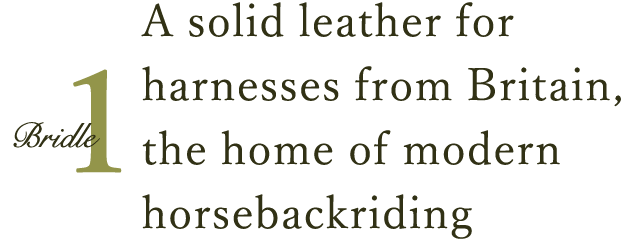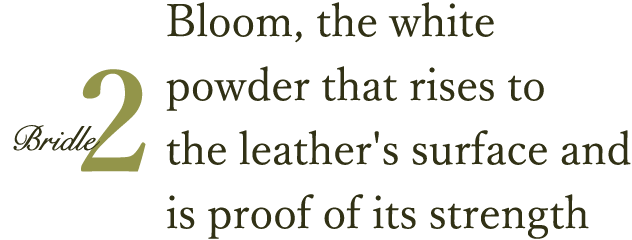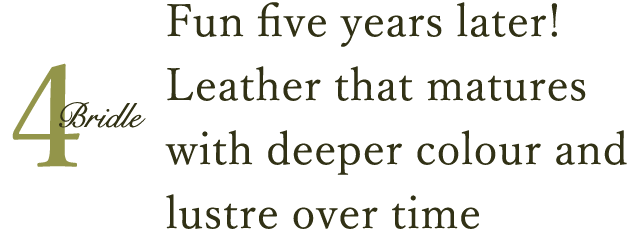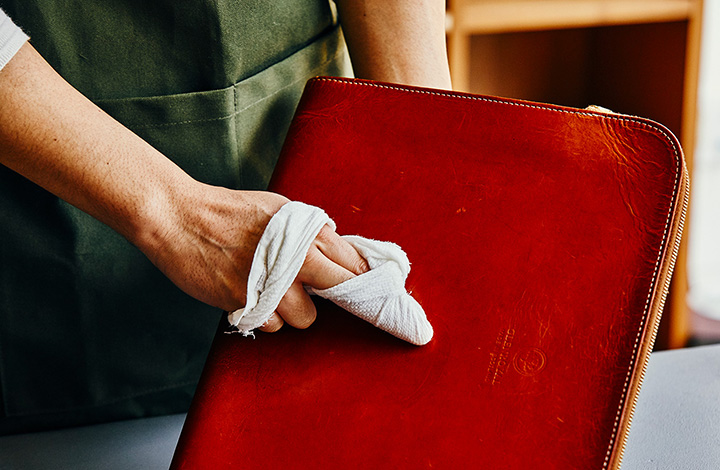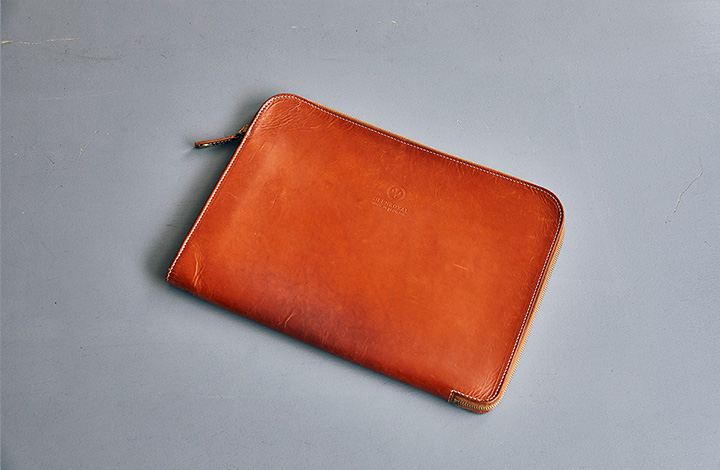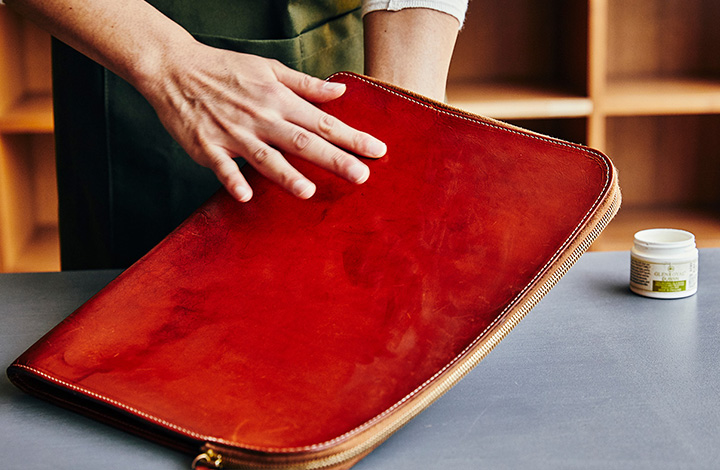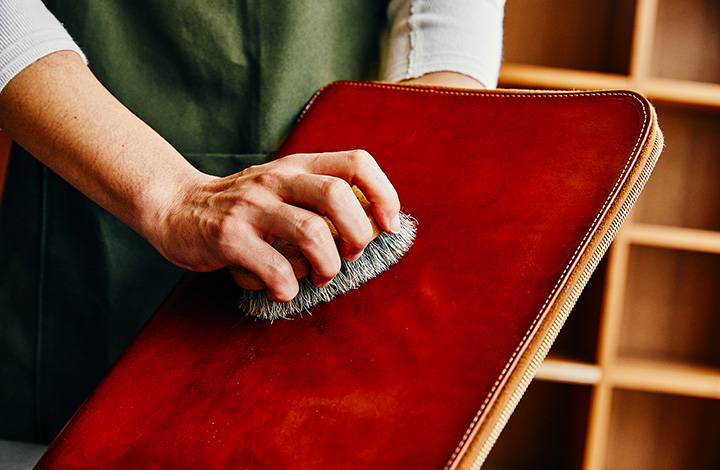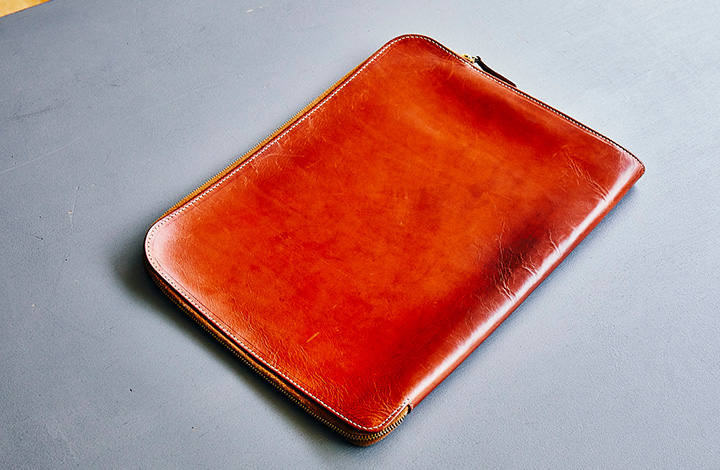Horse racing as it exists today was born on the racecourse of Chester in the UK in 1539. The UK is also the birthplace of equestrian sports such as polo. Bridle leather was developed as a material for harnesses in this home of horse-riding, with some theories stating that its existence dates back nearly 1,000 years. The specific implements bridle leather was used for were of course halters, reins, crops, with the bridle referring to a halter and reins with a bit added.
In particular, the reins served the function of conveying instructions to the horse, and also as a means of helping the rider keep their body balanced. It follows then that if the reins were to break the rider would be in danger of falling off the horse, and thus especially tough bridle leather was a common choice. Bridle leather is now a beloved material that also finds use in bags, leather goods, and belts for trousers.
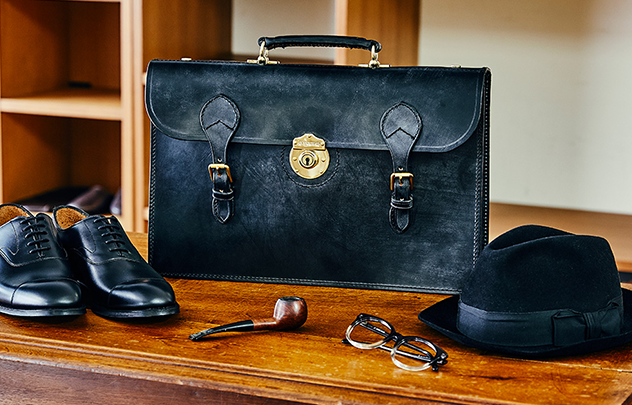
2 Compartment Briefcase
- The British Empire as the cradle of
trad fashion - As one of the first nations to modernize, the UK has produced many legacies that have carried over to today's world. There are sports like equestrianism, boating, golf, football, table tennis, as well as gentleman's fashion such as suits, neckties, balmacaan coats, trench coats, pea coats, Aran sweaters, cardigans, business shoes like straight tips, and briefcases. Then in rural lifestyles there are waxed jackets, quilting for horseback riding, and the list goes on and on. Once one hears all this, it becomes understandable why British fashion is so magnificent.

Bridle leather is a variety of tannin leather, which is made using tannin (an astringent), a plant-based tanning agent. However, after bridle leather has been tanned, beef tallow or beeswax is then worked into it by hand. This gives it surpassing strength and scratch resistance while still allowing it to remain supple.
What's more, some items made with material look as if white powder has been appeared on the leather. This phenomenon is referred to as "bloom", which is in fact the wax that had been worked into the leather rising to the surface (depending on individual differences, there are items where bloom doesn't appear, however). Take this bloom seen here, for instance. Rest easy in knowing that all it takes to remove it is a bit of brushing or rubbing the leather down with a dry towel.
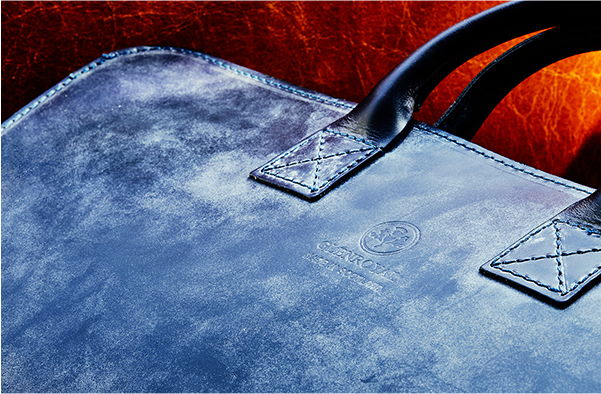
This manner of bloom rising to the surface is unique to bridle leather. Light weight briefcase.
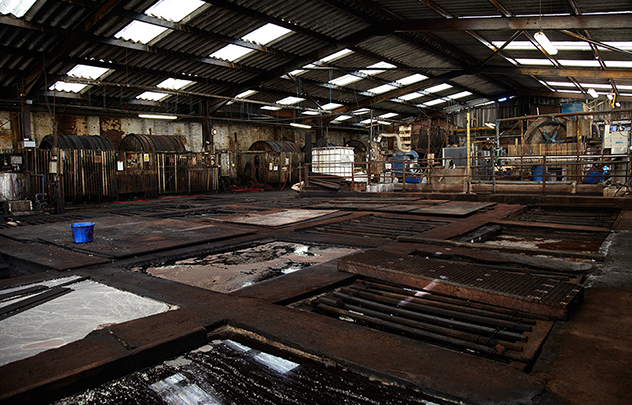
- What sort of technique is tanning
with full tannin? - Tanning is the process of transforming hide into leather. While there is a means of doing so using metal solvents known as chrome tanning, full tannin tanning (pure vegetable tanning) produces leather that is tough, retains its shape well, and absorbent. Even among tannin leathers, Glenroyal's bridle leather is exceptionally hardy and tight all the way to the core due to the deep treatment it gets through a classic technique known as "pit tanning" that involves immersing the hide in a vat of tannin (the photo to the left is of a tannin pit). Furthermore, there aren't many tanners who perform this technique because of the extended amount of time it requires.

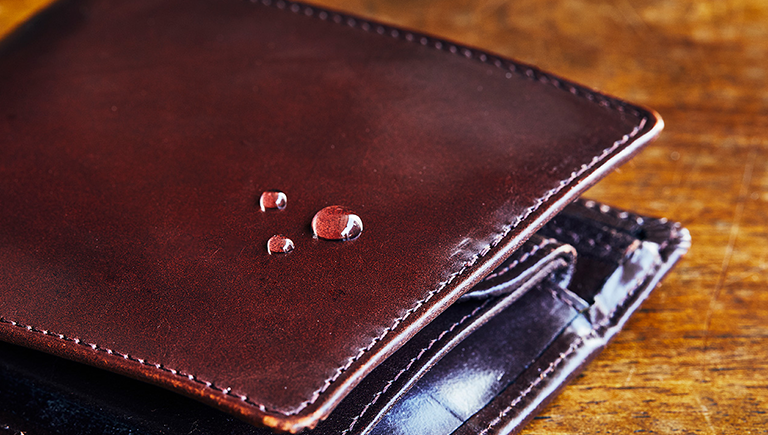
Bridle leather has beef tallow or beeswax applied not only to its surface but also worked deep inside of it, and as such possesses superb tensile strength and resistance to abrasion due to the oil and wax supplementing the strength of its fibre structure. Normal scratch marks can be removed almost entirely just by a rub with a fingertip. What's more, the same oil and wax brings about a water-repellent effect that makes bridle leather more resistant to rain than regular leather. While leather coated with fluororesin may come out on top when it comes to being tough against water, it comes with the demerit of sacrificing the natural texture of the leather. Bridle leather, on the other hand, allows us to enjoy a flavourful feel while retaining its wonderful appearance.
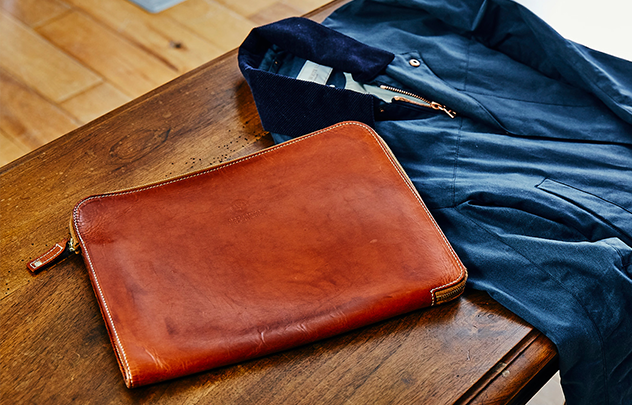
Clutch bag
- Oil treatment originated as countermeasure for rain!
- As a land where light rain is all to frequent, methods for keeping bodies dry in the field developed quickly. One example of this is rubberized cloth, but a more traditional technique is the application of oil or wax to fabric and leather. You can find items like waxed cotton jackets or oiled leather shoes, but it turns out that bridle leather too is a material that has its origins in repelling water. It isn't completely waterproof, though, so if left wet it may get water stains. If your bridle leather item gets wet, make sure to wipe it down quickly with a dry cloth to remove any moisture.
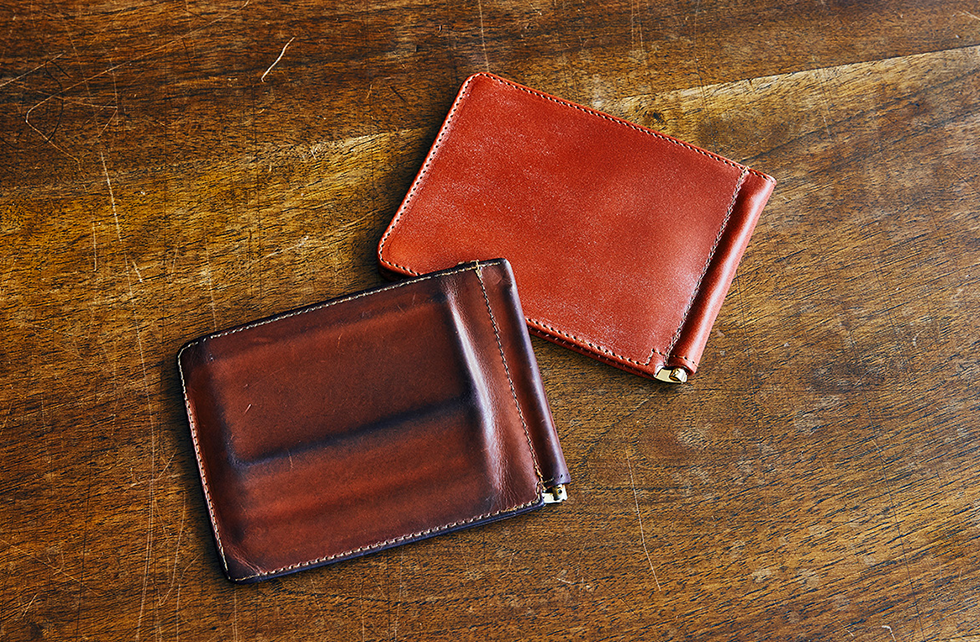
Leather major appeal, namely that it is a material that ages. As it is put to use, it grows smoother, its colour deepens, and it takes on a beautiful sheen, giving it an appearance that is completely different from that of its unused state. Truth be told, this aging phenomenon is a double effect from the tannin tanning along with the oil and wax. Full bridle leather from Glenroyal is coloured with transparent dye, which keeps the original appearance, toughness, and water-repellent nature of the leather intact while making changes in hue and lustre all the more striking. The complete transformation that pale or bright colourant undergo is almost startling. It's easy to see why there are so many bridle leather fans out there who love this is aging effect.

Aging over time into an appearance unique to each user. The shading created by impressions in the leather also add character.

- Colour is applied with dyes
that utilize the look of the leather - Leather stains can be either dyes applied after dissolving them in water, or colourant with insoluble coloured matter constituents. The former is highly transparent at the cost of requiring significant time and labour to produced vivid tones, whereas the latter allows for colour to be applied in a short time but with low transparency. If compared to paint, dyes would be like water colourant, while colourant correspond to oil paints. (In photo to the left, the red is oil paint, and the blue is water-colour) Glenroyal bridle leather is stained only with dyes. Though this means applying the colour takes more time and effort, the transparency results in a rare, exclusive material that utilizes the innate appearance of the leather.

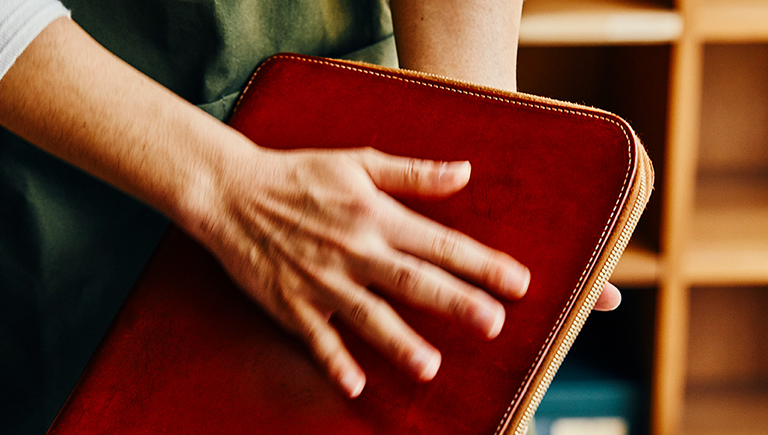
Bridle leather ages naturally as it is used, but with regular upkeep it will help cultivate an even more attractive appearance! A good guideline to try for is once per month. Special attention should be given to portions where the leather bends, areas that tend to take burdens, or corners. This will not only give the tone and lustre deep beauty, but also keep the leather smooth and heighten its durability. Make sure to give the leather some extra oil by applying special wax when you notice the surface looks a bit dry, or when it has been exposed to rain.
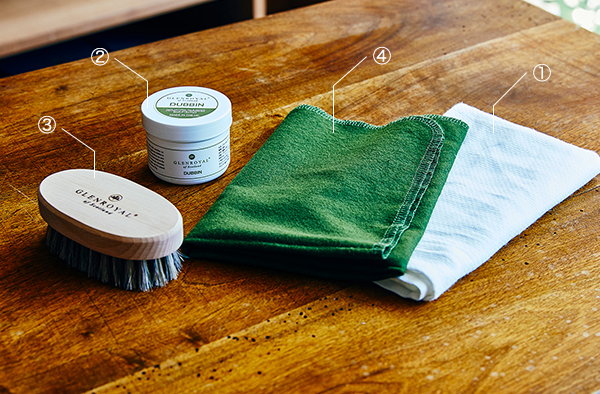
- Here is everything you'll need.
- ①A towel (for wiping away debris)
- ②Dubbin bridle leather wax from Glenroyal
- ③A Glenroyal horse hair brush
- ④A cloth (for drying and shining)

